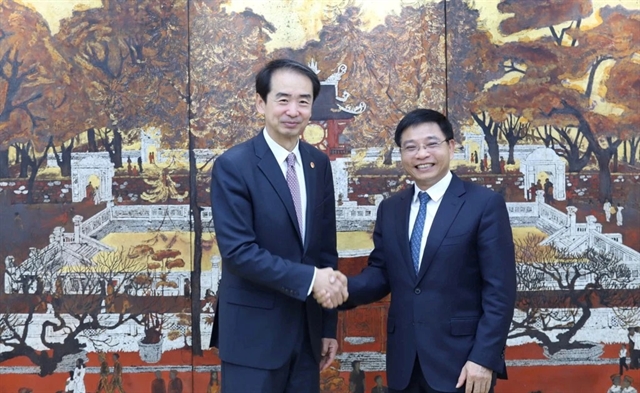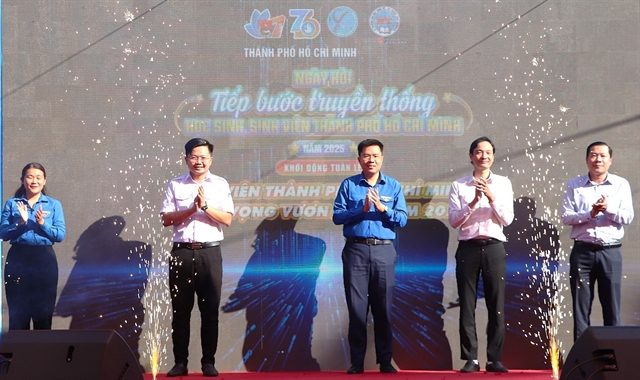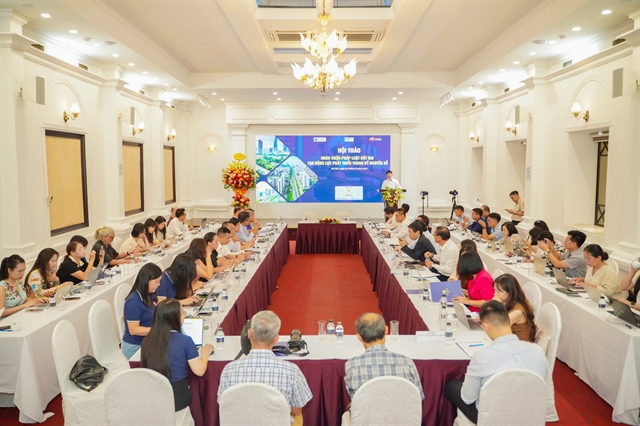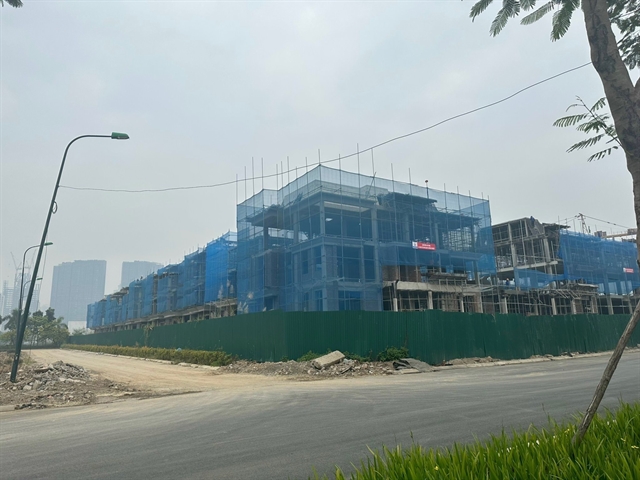 Economy
Economy


|
| A workshop on improving Land Law to create development momentum in the digital age, was held on August 20 in Hà Nội. — VNS Photo Tố Như |
HÀ NỘI — The draft revised Land Law 2024 promises significant improvements in administrative procedures, land valuation transparency and land recovery mechanisms – key reforms expected to boost the real estate market and economic sectors dependent on land use.
The draft was discussed at a workshop on enhancing the Land Law to create development momentum in the digital age, held on August 20 in Hà Nội by VietTimes e-magazine and the Institute of Strategy and Policy on Agriculture and Environment under the Ministry of Agriculture and Environment.
Chairman of the Vietnam Association of Construction Contractors and CP.Invest Nguyễn Quốc Hiệp noted that the draft has sparked debate, particularly over site clearance mechanisms and land valuation methods.
He warned that allowing businesses to negotiate land repossession could delay projects or even cause closures.
Furthermore, the current land valuation method for projects tends to push land prices upward, driving costs higher and potentially inflating prices to unsustainable levels, which could burden economic development.
“The amendment not only ensures transparency in legislation but also strives to balance the interests of businesses, residents, and sustainable development goals,” Hiệp said.
He highlighted the draft law’s groundbreaking amendments designed to protect business rights while revitalising the real estate market and supporting overall economic growth.
Key changes include expanding the State’s authority to recover land for projects in special locations, mixed-use urban residential areas and free trade zones.
Additionally, for projects with a recovery timeline set by local authorities, if 75 per cent of the land is recovered by the deadline, the State will automatically recover the remainder. This aims to give businesses greater confidence and ease in accessing land to execute projects on time.

|
| A property project in Hà Nội. Businesses advocate for streamlining these procedures to facilitate property project execution. — VNA/VNS Photo |
Enterprises have praised this reform spirit, aligned with Resolution 66, which seeks to remove unreasonable legal barriers, improve access to land and production resources, and promote sustainable economic development.
Hiệp also pointed out that current site clearance procedures remain lengthy and complicated, often taking six months to a year, thereby delaying project implementation.
He cited an example in Phú Thọ, where site clearance for a project has dragged on for 14 years, progressing only partially. The cumbersome multi-step process – including notification on site clearance, public posting, compulsory inventory, and land recovery announcements – has been a major bottleneck.
Businesses advocate for streamlining these procedures to facilitate project execution while protecting citizens’ rights and adhering to legal standards.
Land pricing under the old law posed significant challenges due to fragmented land allocations, leading to repeated re-evaluations with price increases averaging around 20 per cent, driving project costs up substantially.
For instance, a project in Phú Thọ experienced land grants in stages (7.2 hectares, then 8.4, then 6.7 hectares), with each valuation rising, complicating financial planning and execution.
To address this, businesses proposed abolishing the segmented land valuation for each stage in favour of a standardised land price list valid for five years, adjusted only by predefined coefficients. This will ensure fairness and transparency.
Past experience shows provincial authorities sometimes set coefficients two to three times higher than the official price list, complicating cost forecasting and fairness. Clear regulatory guidance is vital to prevent such inconsistencies.
Another issue involves the unclear determination of land price lists and coefficients in the bidding process for land use rights, making it difficult for investors to plan effectively.
Enterprises recommend that the drafting committee and Department of Land incorporate explicit bidding mechanisms in the law to guarantee transparency and feasibility.
Editor-in-Chief of VietTimes Nguyễn Bá Kiên commented that in the era of rapid digital transformation, land is not only a tangible asset but also a resource capable of generating high added value through digitalisation, data-driven management, transparency and modern governance.
Completing land policies and laws in a modern and transparent manner, grounded in digitalisation, will not only enable more effective management of this valuable resource but also help create a healthy investment and business environment. — VNS